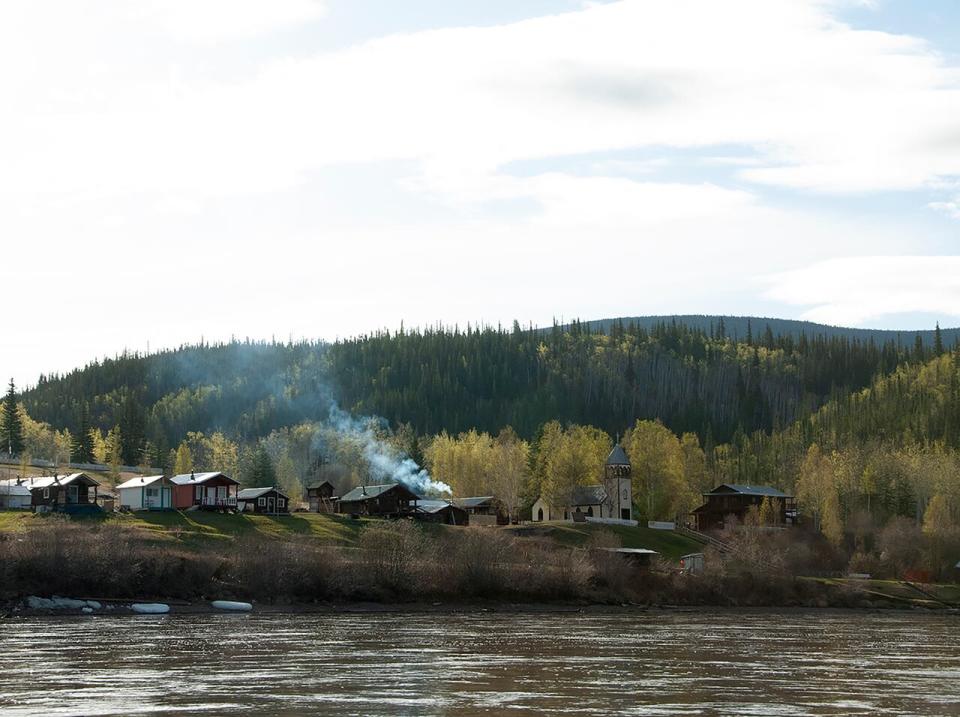Tr'ondëk-Klondike named Yukon's newest UNESCO heritage site

A Yukon site has been added to the prestigious United Nations Educational, Scientific and Cultural Organization (UNESCO) World Heritage List.
Tr'ondëk-Klondike includes eight parcels of land in the Dawson City area that tell the story of Tr'ondëk Hwëch'in's experiences and responses to the rapid expansion of colonialism at the end of the 19th century, during the Klondike Gold Rush.
"We now have the world listening to us, it will be the true story of our people," said Debbie Nagano, director of heritage for Tr'ondëk Hwëch'in and co-chair of the local committee endorsing the bid.
UNESCO's World Heritage Program was established in 1972 and seeks to protect the world's irreplaceable natural and cultural resources. Tr'ondëk-Klondike is now classified as a cultural site, meeting the UNESCO threshold of outstanding value. It is the Yukon's second UNESCO listing, following the 1994 induction of Kluane/Wrangell-St. Elias/Glacier Bay/Tatshenshini-Alsek as a natural world heritage site.

'It will be the true story of our people,' said Debbie Nagano, director of heritage for Tr'ondëk Hwëch'in. (Devon Renee Berquist)
Nagano was among several people in Dawson up early in the wee hours of Sunday morning to listen to the live feed from the UNESCO meetings in Riyadh, Saudi Arabia, as the World Heritage Committee announced 15 new global inductees during its 45th session.
"It started to build up to be quite exciting," she said on the phone from Dawson City.
"In the excitement I also can't help myself in remembering the many elders who are no longer with us. We would not be here today recognizing this inscription without our elders."
It's not the first time the Dawson City area has made a bid for UNESCO status. A previous attempt focused on the Klondike region's Indigenous and mining history both from the Gold Rush to present day. But the local committee later withdrew the bid, saying UNESCO "had some trouble understanding the site as we presented it."
The newer application presented the region as a unique case study in colonialism and its lasting impact on Indigenous communities forced to respond and adapt.

A view of the Moosehide Village site downriver from Dawson City. The UNESCO site comprises 8 different locations along the Yukon and Blackstone Rivers. (Michael Edwards/Tr'ondek Hwech'in)
The site comprises eight different locations along the Yukon and Blackstone Rivers, covering 334 hectares in total, and the designation will not impact treaty rights or mining.
"This is our first [UNESCO] cultural site and in some ways I think Yukoners already know that Tr'ondëk and the history is amazing heritage, world-class heritage, but this becomes an acknowledgement for the rest of the world to know this as well," said Yukon Tourism Minister John Streicker.
"If you think of the story of the Yukon and you have First Nations history going back so far, and then suddenly the Gold Rush hits and then all this change happens at a go — this is an important part of that whole story about how we're recognizing the cultural heritage of Tr'ondëk and Yukon First Nations and how it is a thread that runs throughout," Streicker said.

Dawson City during the Klondike Gold Rush, an era that brought massive change to the area and its people in just a few years. (Henry Guttmann Collection/Hulton Archive/Getty Images)
Dawson City Mayor Bill Kendrick is also hopeful the new designation will help attract more visitors to the region.
"I think all indications are that this will give tourism in the Klondike a little bump and that is a good thing for our tourism industry," Kendrick told CBC News.
A special ceremony in Dawson City marking the new UNESCO designation for Tr'ondëk-Klondike is planned for this Friday.


